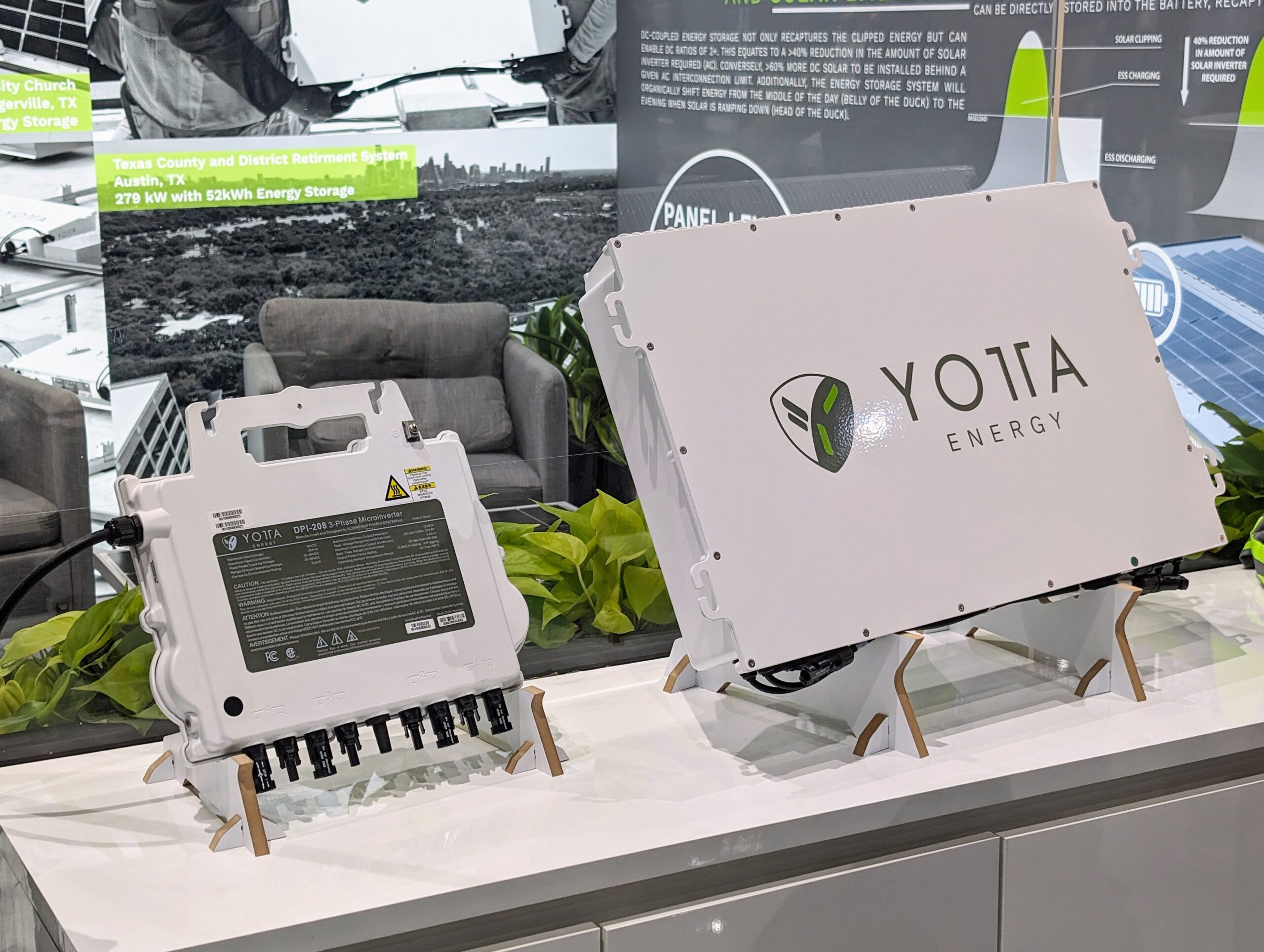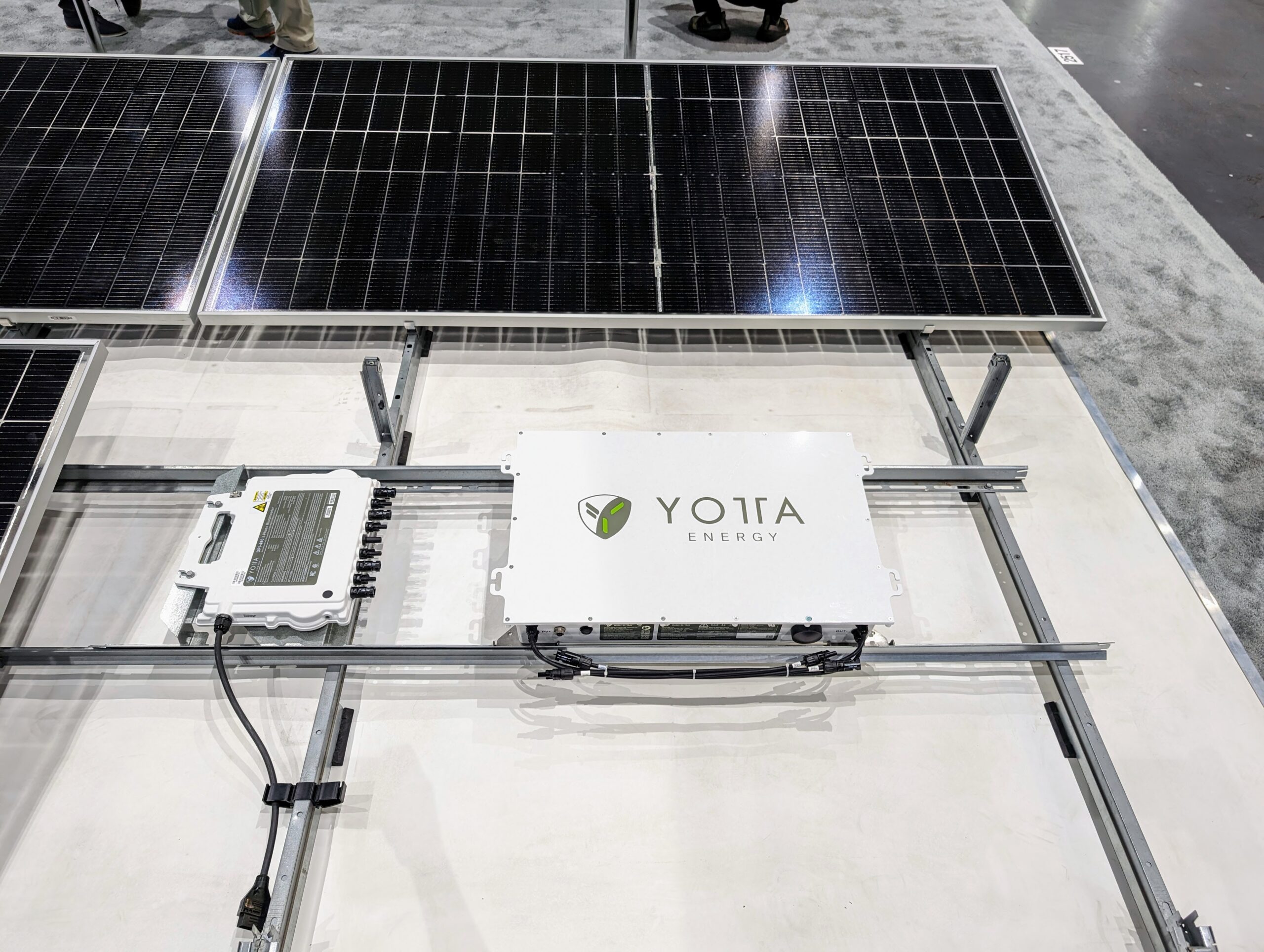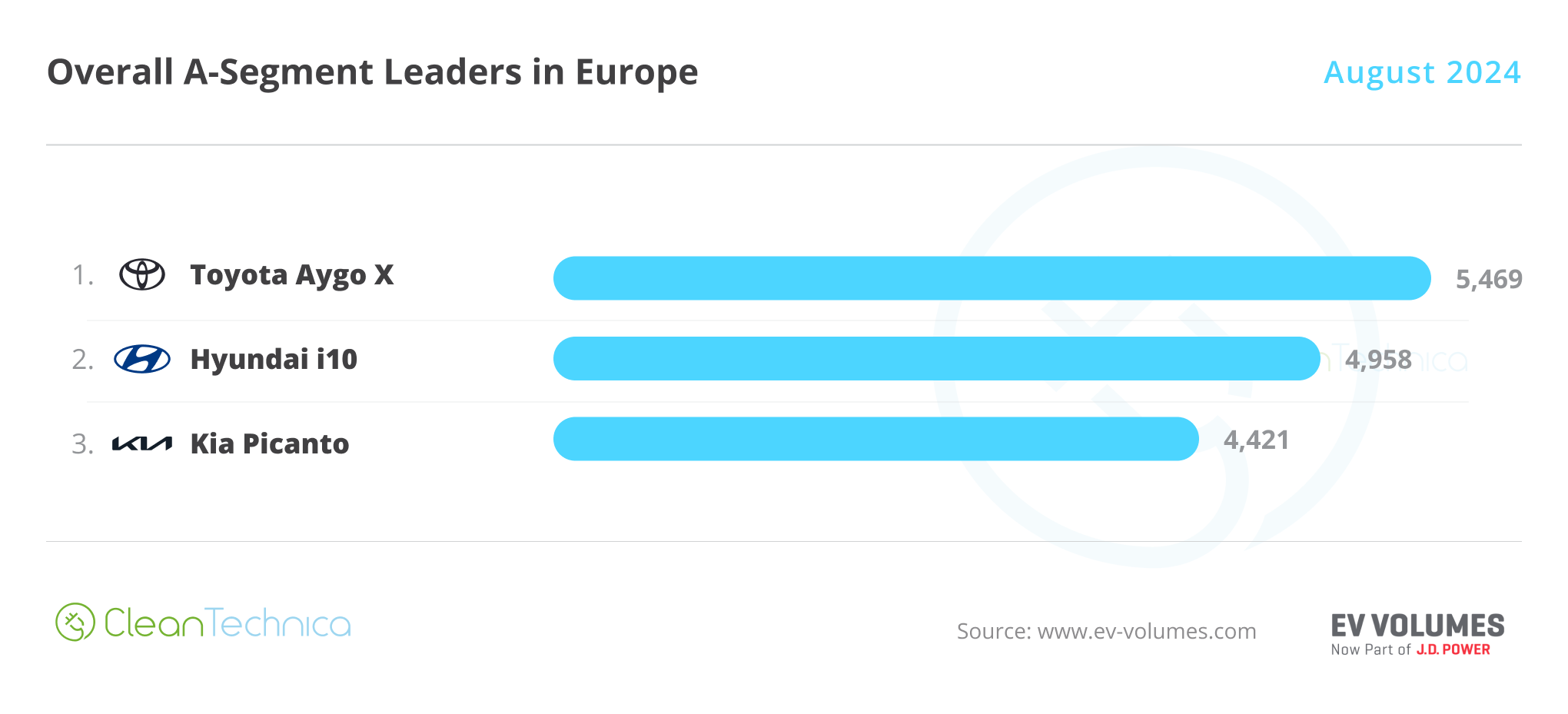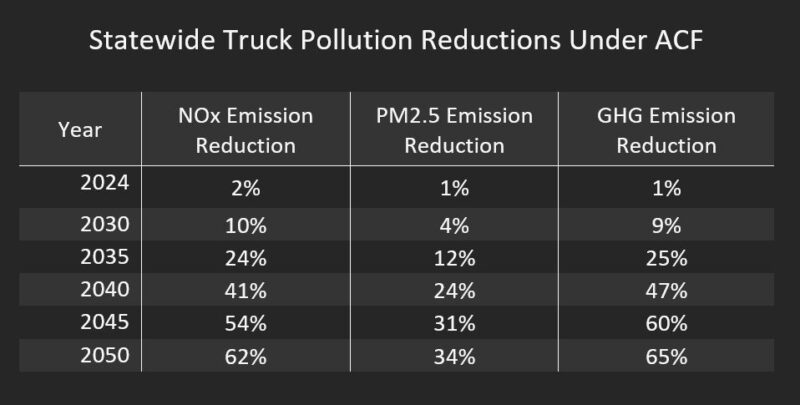Sign up for daily news updates from CleanTechnica on email. Or follow us on Google News!
Solar energy storage company Yotta Energy was at Intersolar 2024 this year, and we connected with the team to talk about the company’s unique rooftop energy storage solution.
The core of its technology is a compact sealed lithium iron phosphate (LFP) energy storage system that is designed not to need any external coolant and nests directly under a rooftop solar panel, allowing the installation to be integrated directly into the solar panel string on the DC side of the inverter.
Installing small batteries underneath each solar panel on the roof brings a number of benefits. First and foremost, it eliminates the need to wire a separate energy storage system into the solution. Yotta Energy’s 1 kilowatt-hour (kWh) battery packs connect directly in line with the existing solar system, and at 53 pounds each, they’re manageable for a single installer.

The LFP chemistry is already extremely thermally stable, and Yotta enhances this even further with a novel passive phase change cooling system. For starters, the exterior of Yotta Energy’s energy storage system is white, which reflects as much heat as possible. The bulk of the battery is flanked on either side with passive cooling fins that allow it to dissipate heat as needed.
Inside the pack, the LFP cells themselves are mounted in the center of the pack and sandwiched between two ceramic insulators that minimize the amount of external hot or cold temperature that is allowed into the battery cells. Finally, surrounding the LFP battery cells themselves is a wax layer, which when the cells are operating at an optimal temperature stays at a solid. As the cells heat up, the wax changes state from a solid to a liquid, pulling excess heat from the cells.
 Chip in a few dollars a month to help support independent cleantech coverage that helps to accelerate the cleantech revolution!
Chip in a few dollars a month to help support independent cleantech coverage that helps to accelerate the cleantech revolution!
Yotta has already tested the systems in production in Texas through a summer that saw numerous days with temperatures over 100° F, so the company is confident in the hot weather performance of the solution. Moving into 2024, Yotta Energy plans to do some installations in the far northern United States to see how they perform in colder temperatures as well. Cold weather typically isn’t as much of an issue with batteries, especially LFP batteries, but it’s important to verify.
Yotta Energy is targeting small and medium commercial and industrial installations between 20 kW and 1.5 megawatts of solar. The company works directly with customers in what they view as an underserved market to deliver a one-stop-shop for solar and energy storage.

To ensure a seamless integration, Yotta Energy also developed its own micro inverter that allows its sealed 1 kWh batteries to plug directly into the micro inverter and ensures minimal additional work and an optimal connection with the overall solar system.
The 1 kWh battery itself mounts directly underneath the solar panel, which provides shade to the battery as well as providing a bright uniform reflective surface to push some of the solar that comes through the solar panel back up to the back side of the bifacial panels. Most of the installations the company is working with already have white, mostly reflective roofs for the thermal benefits so this isn’t a huge advantage, but it does minimize the loss that would occur with a different color paint.
Adding the weight of the batteries to the solar rooftop rack also eliminates the need for an additional passive ballast to be added to the system. This is typically done in the form of adding cement blocks that simply sit on top of the bottom rails of the solar installation pinning it to the roof. This is common in commercial and industrial (C&I) installations and allows the system to be added to the top of the roof without penetrating the roof or compromising the waterproofness of the roof.
Yotta Energy just received the UL certification for its energy storage system in May of last year and it has been on a tear installing the systems ever since. In the remainder of last year, the company installed two megawatt-hours of its energy storage products alongside approximately 20 megawatts of solar. By January of 2024, Yotta was already on track to install 2 megawatt hours of its energy storage systems in just the first quarter, and is targeting the installation of 10 megawatt-hours of storage by the end of the year.
It’s exciting to see new innovations like this that take a different approach to solving unique problems for different segments of the market. Small and medium C&I installations are definitely underserved in the solar market and Yotta Energy seems to have cracked the code with its rooftop solar plus storage system.
For more information about Yotta Energy and its energy storage products, head over to the company’s website.
Have a tip for CleanTechnica? Want to advertise? Want to suggest a guest for our CleanTech Talk podcast? Contact us here.
Latest CleanTechnica TV Video
CleanTechnica uses affiliate links. See our policy here.




